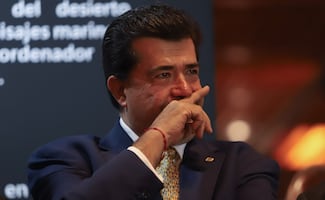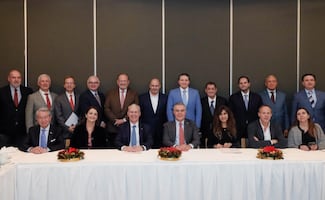At the beginning of the 90’s, a close friend and a great Mexican, Manuel Uribe Castañeda, coined an expression that echoes to this day: “In Mexico, we tend to go northward instead of going eastward”. Amidst the negotiation process for the North American Free Trade Agreement (NAFTA), Mexico’s vision was only focused in the North American region while leaving the newly open embassies in the Asian countries behind. Economic indicators showed a strong tendency towards the northern market and thirty years later, the same indicators show a vigorous development of the manufacturing industry and the foreign trade that has placed Mexico as the thirteenth exporting nation in the world and the first in Latin America, still with a ferocious reliance on the American market, where 80% of our exports are headed. This reliance came with several weaknesses for our country.
Crisis as an opportunity
Times of crisis are often times of opportunity and we are now given a unique opportunity to look for economic relations with other global players. The Trans Pacific Partnership Agreement (TPP) is virtually extinct, yet it will be important to pursue bilateral agreements with the original signatories of this agreement, a process which will take some years.
The Latin American markets with whom Mexico holds free-trade agreements are not vast enough to absorb the export surplus that looks ahead. For its part, the European Union is in the middle of a political, social and financial crisis that calls for complex solutions and which will hardly be able to pay heed to the demands of the Mexican economy. To target India, a very interesting market, is still very long ahead. In light of this context it is important to turn to China, the second most powerful economy in the world and our second commercial partner who has lend a hand for us to take without haste, with commitment, decision, courage and firmly.
The signs provided by the People’s Republic of China have been both sound and subtle, thus the importance of clearly reading between lines. In the international arena, president Xi Jinping led a message urbi et urbi where he affirmed as the advocate of free trade, globalization and of the combat against climate change in both the Summit of the Asia-Pacific Economic Cooperation Forum (APEC) held in Peru and in the World Economic Forum in Davos in mid January this year. Mexico shares, sustains and upholds this vision for its own development as well as for its global positioning.
In the bilateral arena, State Counselor of China, Yang Jiechi, visited Mexico on December 12 to meet with president Peña Nieto, as an extension of his trip to meet then president-elect, Donald Trump. Though the contents of the conversation between high-rank politician Jiechi and president Peña Nieto were not disclosed, the visit represents a clear sign that it is relevant to give room for a bilateral relation between Mexico and China. This suggests that China expects to receive a prompt and bold outlook on how to reposition Mexico in the geopolitical and economical global map as an ally country.
Integration and competitiveness
Voices against the economic integration between Mexico and China have also been raised claiming that they are both competitors producing the same goods. Such statements are wrong as they only consider a relationship based on Mexico’s supply of raw material to China, keeping in trend with the rest of Latin American economies. The economies of Mexico and China, both based highly in industrial manufacturing and exports, can integrate their value chains resulting in more competitive manufacturing for the international market.
Take the auto assembly industry, where China leads the way worldwide producing over 20 million units in 2015, Chinese companies would have a strong interest in producing its car in our country, should the Mexican car assembly plants be at risk, as seen in the recent negotiations held between JAC Motors and Giant Motors in the Mexican state of Hidalgo. This are certainly encouraging signs that render an economic integration viable between Mexico and China and which can target not only a U.S. market but the open markets that Mexico has with Latin America, Europe and the Middle East.
Reassessing the relations
For the last thirty-five years, China has undertaken a deep transformation as a result of pivotal reforms pushed at the beginning of the 80s, based on long-term policies that aimed at job creation, entrepreneurship and the eradication of extreme poverty for over 500 million Chinese. Consequently an affluent middle-class has been created with over 400 million Chinese demanding more and better services as well as high-quality products. More importantly, Chinese economy has gone from being a recipient of foreign investment into a direct capital exporter worldwide in both developing and developed countries.
Lastly, let me share a personal reflection rendered from my thirteen-year work in and with China: for the Chinese, there is no other way to eradicate poverty than creating jobs. Similarly the only way to amass capital is through personal, corporate and governmental savings that an organized society would use to finance its development.
Sergio Ley López was ambassador of Mexico to China from 2001-2007
Noticias según tus intereses
[Publicidad]
[Publicidad]














